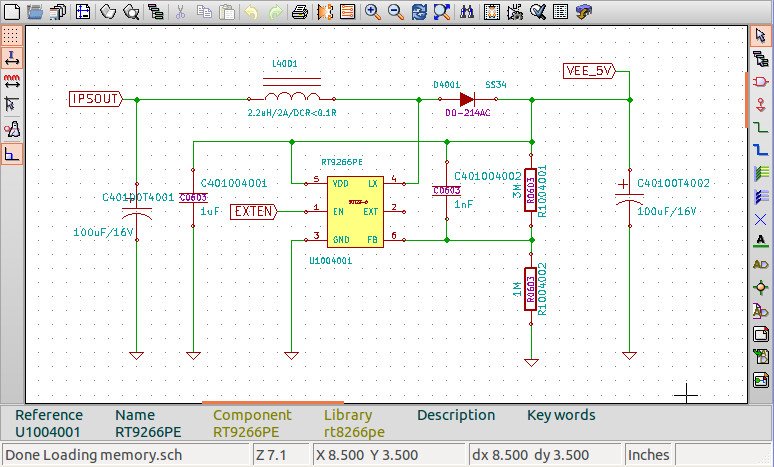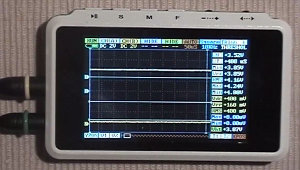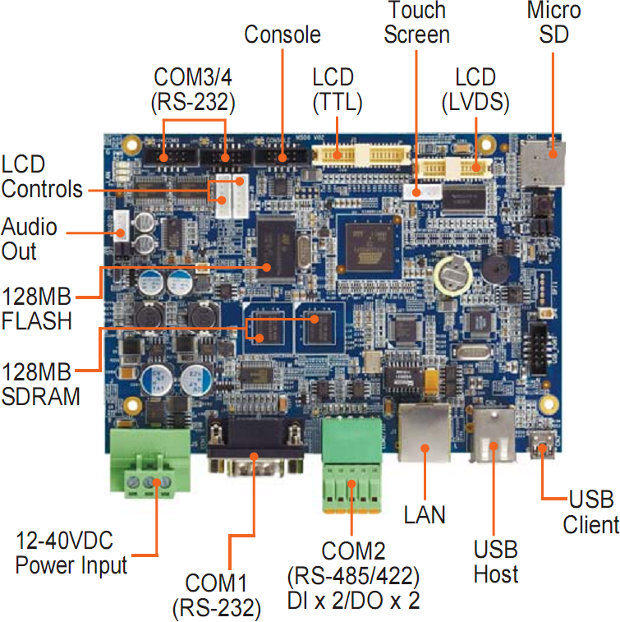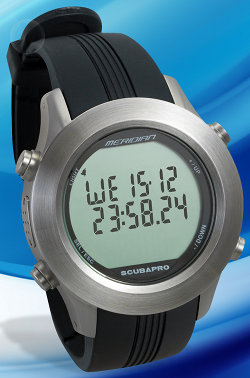Most schematics capture and PCB layout software run on Windows and are closed source. But if your favorite OS is Linux, there are a few open source software including Kicad and gEDA. There is also Cadsoft Eagle which can be installed in Linux with a free license for hobbyists and educational purposes, but is not open source. Today, I’ll focus on Kicad. I don’t really capture schematics, let alone layout PCBs, but I sometimes need to use this type of software to locate pins/components on the schematics and PCB and check some parts of the schematics that can affect software. So I will mainly give an overview of Kicad and write my experience trying to import another project (Beagleboard XM) to Kicad. If you want to learn how to get started with your own project with Kicad, you might want to have a look at Teho Labs Kicad Tutorial. In […]
makeSD Script to Write Image to SD Card for Mele A1000 / AllWinner A10 Devices
Most images released for Mele A1000 (Ubuntu, Puppy Linux..) won’t fit in my SD card, and until now I had to manually partition the SD card, extract the data and copy it to the SD card. I’ve also noticed the size of the SD card slowly creeps lower overtime. I bought an SD card last week and fdisk reported 3901685760 bytes and this morning the same command reported 3898782720 bytes. That’s probably due to new bad sectors which I believe is actually normal for this type of device. The problem is that a backup of “last week” SD card done with dd might not be restored properly with dd since the SD card is now smaller. So I decided to write a shell script “makeSD.sh” that will do the following: Umount the SD card if needed Partition the SD card Copy uboot to the SD card Mount the image file […]
VWorks VLAB Powers Freescale Vybrid Virtual Platform
Back in March, Freescale announced their Vybrid solution featuring both a Cortex A5 processor and a Cortex M4 microcontroller, and they had prototypes running an unnamed virtual platform in order to speed up software development and possibly have the software ready at the same time as the silicon is. Always looking to learn more, I studied and wrote about virtual hardware platforms such as Cadence Virtual System Platform, Wind River Simics Virtual Platforms and the open source Imperas OVPsim simulator. It turns out Freescale does not use any of these solutions, but relies on VWorks VLAB instead, which still use the same standard (SystemC/TLM) as the virtual hardware solutions aforementioned. VWorks uploaded a demonstration of VLAB running a virtual platform for the Freescale Vybrid controller and showing how it can handle both ARM Cortex-A5 and Cortex-M4 cores. This demo of VLAB 1.7.0 is pretty interesting and showcases: Dual (virtual) display […]
199 USD Seeed Studio DSO Quad Open Source Oscilloscope
The DSO (Digital Storage Oscilloscope) Quad is a pocket size 4 channel digital oscilloscope for common electronic engineering tasks based on STM32F103VCT6 ARM cortex M3 MCU with a 3″ display. It can provide 72MS/s sampling rate with integrated FPGA and high speed ADC and an internal 2MB USB disk can be used to store waveform captures, user applications and to upgrade firmware. SeeedStudio DSO Quad is not exactly a new product (June 2011), but I was not aware of this type of low cost oscilloscopes until I come across a review today. Here are the key features of this tiny oscilloscope: Pocket size and light weight Two 72MS/s analog channels, plus two digital channels Signal Generator Auto Measurement Various Triggering Option Easy waveform storage Firmware upgrade User applications Open source and technical specifications: 2x Analog channel: [CH A] [CH B] 2x Digital channel : [CH C] [CH D] Vertical […]
Artila M-506 and M-606 ARM9 Industrial Single Board Computers
Artila Electronics announced 2 new single board computers (SBC) based on Atmel SAM9G45 ARM9 Processor: Artila M-506 running Linux 2.6.38 Artila M-606 running Wince 6.0 Both models features the same hardware with a standard 3.5” form factor, Atmel AT91SAM9G45 Processor, 128MB DDR2 RAM, 128MB NAND Flash and 2MB DataFlash and only differ by the operating system and software used. The company explains that the board targets industrial application such as intelligent transportation system (ITS), building automation, energy-saving system, and scenario control systems. Here are the hardware specifications for both devices: CPU – ATMEL AT91SAM9G45 @ 400MHz Memory – 128MB SDRAM Flash – 128MB NAND & 2MB DataFlash for system recovery On-board TTL/LVDS LCD interface Supports 5V/12V TFT LCD panels, up to 1280 x 860 pixels Ethernet: 1x, 10/100Mbps COM port – 3x RS-232, 1x RS-422/485 USB Host – 4x USB 2.0 HS ports. Micro-SD Card – 16GB max. GPIO – […]
Huawei K3V2 Based MediaPad 10 FHD Tablet Hands-On Video
Earlier this year, Hisilicon – a subsidary of Huawei – unveiled the K3V2 quad-core Cortex A9 processor at Mobile World Congress and Huawei showcased the Ascend Quad D Android 4.0 smartphone as well as an high-end Android ICS Tablet based on this processor called Huawei MediaPad 10 (which nobody was allowed to use). This tablet features a 1920×1080 display with a 10-point touchscreen, 1GB RAM, 32 GB Flash and a 8MP rear camera together with a 1.3MP front camera. It also comes with a 6,600 mAh battery and is only 8.8mm thick. Huawei brought the device at CTIA 2012 and Engadget could shot an hands-on video of the MediaPad 10 FHD. No release date nor pricing is available, nevertheless it’s listed for 699.99 USD on Android-Sale.com. Jean-Luc Aufranc (CNXSoft)Jean-Luc started CNX Software in 2010 as a part-time endeavor, before quitting his job as a software engineering manager, and starting to […]
Tizen OS Running on Samsung Smartphone Reference Design (Video)
After Tizen 1.0 (codenamed Larkspur) release last week, a Samsung prototype was showcased at the Tizen Developer Conference on May 7-9 in San Francisco. The Samsung prototype fearures a 4.65 inch 1280 x 720p HD Super AMOLED display and runs Tizen on an Exyons? 1.2 Ghz dual core Cortex A9 chip with 1 GB of RAM. Vaibhav Sharma of The Handheld Blog, who has tried this developers’ reference design at the conference, shows us the main menu (similar to TouchWiz), system settings, the web browser (which scores 408 on HTML5Test.com), the picture gallery, the music player, youtube video playback etc… and it looks pretty smooth as shown in the hands-on video below. This is just a prototype, so performance will most likely be further improved once a Tizen smartphone is made available to the general public. Jean-Luc Aufranc (CNXSoft)Jean-Luc started CNX Software in 2010 as a part-time endeavor, before quitting his […]
SCUBAPRO-UWATEC Meridian Dive Computer Powered by EFM32 Gecko Cortex M3 MCU
SCUBAPRO-UWATEC and Energy Micro have unveiled the SCUBAPRO Meridian dive computer powered by Energy Micro EFM32 Gecko MCU. Meridian is a sophisticated dive computer in a watch design, powered by a CR2032 lithium battery. The companies claim the Meridian is the world’s first 32-bit dive watch-computer. It can operate at depths of up to 120 meters, incorporates an advanced diving algorithm, performs multi-gas decompression and features an heart rate monitor that enables adaptive workload calculations. The watch computer can be used both during diving, configured to display a variety of dive information including depth, dive time, decompression status and water temperature, and above the surface where it handles remaining desaturation time, no-fly time. Its built-in thermometer and altimeter can also be used for mountain treks. The MCU used in the Meridian is the Energy Micro EFM32G890 Gecko, a 32MHz 32-bit MCU based on ARM Cortex-M3 consuming 180µA/MHz is active mode […]







